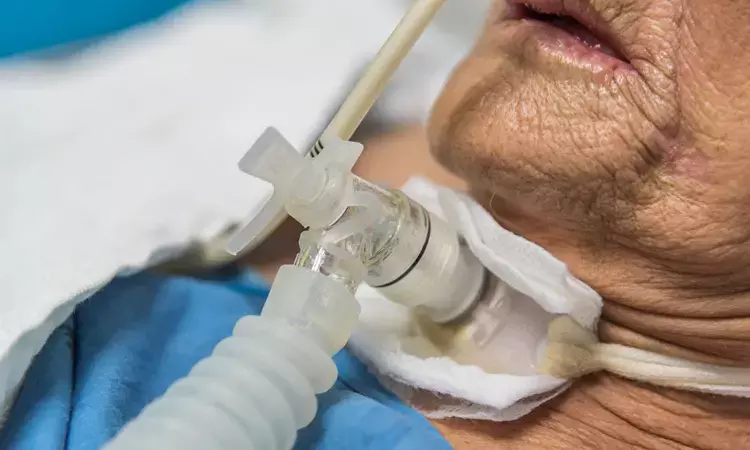- Home
- Medical news & Guidelines
- Anesthesiology
- Cardiology and CTVS
- Critical Care
- Dentistry
- Dermatology
- Diabetes and Endocrinology
- ENT
- Gastroenterology
- Medicine
- Nephrology
- Neurology
- Obstretics-Gynaecology
- Oncology
- Ophthalmology
- Orthopaedics
- Pediatrics-Neonatology
- Psychiatry
- Pulmonology
- Radiology
- Surgery
- Urology
- Laboratory Medicine
- Diet
- Nursing
- Paramedical
- Physiotherapy
- Health news
- Fact Check
- Bone Health Fact Check
- Brain Health Fact Check
- Cancer Related Fact Check
- Child Care Fact Check
- Dental and oral health fact check
- Diabetes and metabolic health fact check
- Diet and Nutrition Fact Check
- Eye and ENT Care Fact Check
- Fitness fact check
- Gut health fact check
- Heart health fact check
- Kidney health fact check
- Medical education fact check
- Men's health fact check
- Respiratory fact check
- Skin and hair care fact check
- Vaccine and Immunization fact check
- Women's health fact check
- AYUSH
- State News
- Andaman and Nicobar Islands
- Andhra Pradesh
- Arunachal Pradesh
- Assam
- Bihar
- Chandigarh
- Chattisgarh
- Dadra and Nagar Haveli
- Daman and Diu
- Delhi
- Goa
- Gujarat
- Haryana
- Himachal Pradesh
- Jammu & Kashmir
- Jharkhand
- Karnataka
- Kerala
- Ladakh
- Lakshadweep
- Madhya Pradesh
- Maharashtra
- Manipur
- Meghalaya
- Mizoram
- Nagaland
- Odisha
- Puducherry
- Punjab
- Rajasthan
- Sikkim
- Tamil Nadu
- Telangana
- Tripura
- Uttar Pradesh
- Uttrakhand
- West Bengal
- Medical Education
- Industry
Tracheostomy safe and effective in patients with COVID-19: JAMA Study

According to a recent systematic review, it has been observed that tracheostomy is a relatively effective and safe treatment for patients with COVID-19 and and also safe for the health care professionals (HCPs) performing the procedures who are wearing personal protective equipment.
The study is published in the JAMA Otolaryngology- Head & Neck Surgery.
Approximately 5% to 15% of patients with COVID-19 require invasive mechanical ventilation (IMV) and, at times, tracheostomy. Details regarding the safety and use of tracheostomy in treating COVID-19 continue to evolve.
Authors, Phillip Staibano and colleagues from the Department of Surgery, Otolaryngology–Head and Neck Division, McMaster University, Hamilton, Ontario, Canada conducted the present research with the objective to evaluate the association of tracheostomy with COVID-19 patient outcomes and the risk of SARS-CoV-2 transmission among health care professionals (HCPs).
English-language studies investigating patients with COVID-19 who were receiving IMV and undergoing tracheostomy were included in the study. Observational and randomized clinical trials were eligible (no randomized clinical trials were found in the search). All screening was performed by 2 reviewers.
The researchers included a total of 4669 patients in the 69 studies, and the mean (range) patient age across studies was 60.7 (49.1-68.8) years (43 studies [62.3%] with 1856 patients). In all studies, 1854 patients (73.8%) were men and 658 (26.2%) were women.
SARS-CoV-2 transmission between HCPs and levels of personal protective equipment, in addition to complications, time to decannulation, ventilation weaning, and intensive care unit (ICU) discharge in patients with COVID-19 who underwent tracheostomy were set as the main outcomes to be determined.
Based on the methodology, the following results were drafted-
- 40.6% of the studies investigated either surgical tracheostomy or percutaneous dilatational tracheostomy.
- Overall, 3 of 58 studies constituting 5.17% identified a small subset of HCPs who developed COVID-19 that was associated with tracheostomy.
- Studies did not consistently report the number of HCPs involved in tracheostomy.
- Among the patients, early tracheostomy was associated with faster ICU discharge (mean difference, 6.17 days; 95% CI, −11.30 to −1.30), but no change in IMV weaning (mean difference, −2.99 days; 95% CI, −8.32 to 2.33) or decannulation (mean difference, −3.12 days; 95% CI, −7.35 to 1.12).
- There was no association between mortality or perioperative complications and type of tracheostomy.
- A risk-of-bias evaluation that used ROBINS-I demonstrated notable bias in the confounder and patient selection domains because of a lack of randomization and cohort matching.
- There was notable heterogeneity in study reporting.
Therefore, the authors concluded that "enhanced personal protective equipment is associated with low rates of SARS-CoV-2 transmission during tracheostomy. Early tracheostomy in patients with COVID-19 may reduce ICU stay, but this finding is limited by the observational nature of the included studies."
Dr. Nandita Mohan is a practicing pediatric dentist with more than 5 years of clinical work experience. Along with this, she is equally interested in keeping herself up to date about the latest developments in the field of medicine and dentistry which is the driving force for her to be in association with Medical Dialogues. She also has her name attached with many publications; both national and international. She has pursued her BDS from Rajiv Gandhi University of Health Sciences, Bangalore and later went to enter her dream specialty (MDS) in the Department of Pedodontics and Preventive Dentistry from Pt. B.D. Sharma University of Health Sciences. Through all the years of experience, her core interest in learning something new has never stopped. She can be contacted at editorial@medicaldialogues.in. Contact no. 011-43720751
Dr Kamal Kant Kohli-MBBS, DTCD- a chest specialist with more than 30 years of practice and a flair for writing clinical articles, Dr Kamal Kant Kohli joined Medical Dialogues as a Chief Editor of Medical News. Besides writing articles, as an editor, he proofreads and verifies all the medical content published on Medical Dialogues including those coming from journals, studies,medical conferences,guidelines etc. Email: drkohli@medicaldialogues.in. Contact no. 011-43720751


